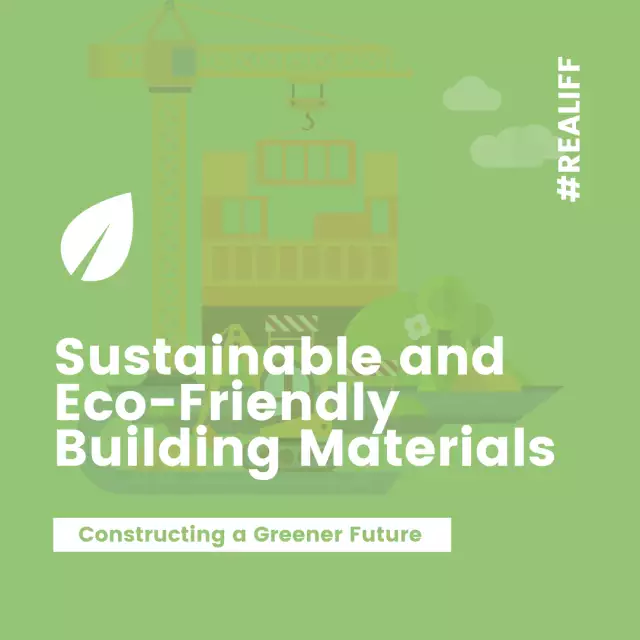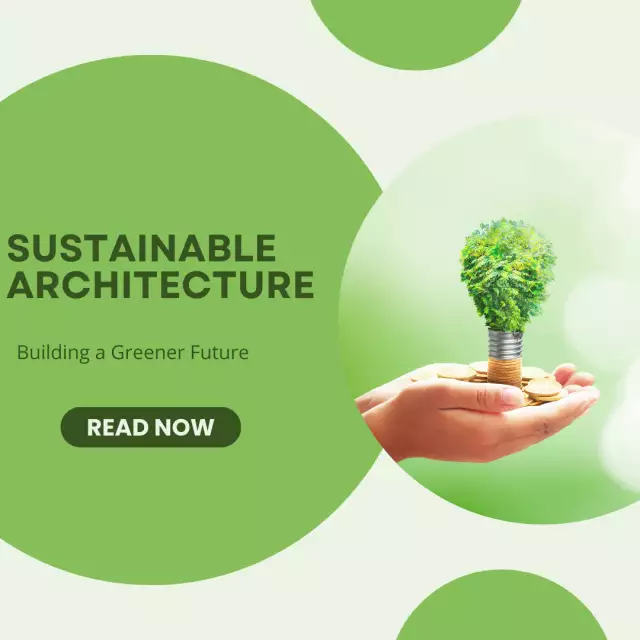Sustainable and Eco-Friendly Building Materials: Constructing a Greener Future
Sustainable and Eco-Friendly Building Materials: Constructing a Greener Future
In recent years, there has been a growing awareness of the need for sustainable and eco-friendly practices in every aspect of our lives, including the construction industry. As the environmental impact of conventional building materials becomes evident, the demand for greener alternatives has risen. Sustainable and eco-friendly building materials offer a solution by reducing energy consumption, minimizing waste, and promoting the health and well-being of both occupants and the environment. This blog post explores the importance of using sustainable materials in construction and highlights some of the most innovative options available.
Benefits of Sustainable and Eco-Friendly Building Materials
a) Reduced Environmental Impact:Sustainable building materials help mitigate the adverse effects of construction on the environment. They minimize carbon emissions, decrease energy consumption, conserve natural resources, and promote sustainable land use practices.
b) Improved Indoor Air Quality: Conventional building materials can release harmful toxins and volatile organic compounds (VOCs) into the air, compromising indoor air quality. On the other hand, eco-friendly materials are non-toxic, low in VOCs, and improve the overall health and well-being of building occupants.
c) Energy Efficiency:Sustainable materials often possess superior insulating properties, reducing the need for excessive heating or cooling. This helps conserve energy, lower utility bills, and decrease reliance on fossil fuels.
d) Waste Reduction:Construction and demolition waste constitutes a significant environmental concern. Sustainable building materials, including recycled and repurposed materials, minimize waste generation and divert it from landfills, contributing to a circular economy.
How to Maximize the Potential of Small Spaces
Types of Sustainable and Eco-Friendly Building Materials
a) Bamboo:As one of the fastest-growing plants, bamboo is an excellent renewable resource for construction. It offers a high strength-to-weight ratio, durability, and versatility. Bamboo can be used for flooring, structural elements, and even as a substitute for conventional timber.
b) Recycled Materials:Utilizing recycled materials reduces the demand for new resource extraction. Examples include recycled plastic, reclaimed wood, and recycled metal. These materials can be used in various applications such as flooring, insulation, and decking.
c) Green Concrete:Traditional concrete production contributes to significant carbon emissions. Green concrete, also known as eco-concrete, incorporates recycled materials like fly ash, blast furnace slag, or silica fume as partial replacements for cement. Additionally, alternative binders like geopolymer and magnesium oxide can be used to reduce the carbon footprint of concrete.
d) Hempcrete:Made from a mixture of hemp fibers, lime, and water, hempcrete is an eco-friendly alternative to traditional concrete. It provides excellent thermal insulation, regulates humidity, and has a negative carbon footprint due to the carbon sequestration properties of hemp plants.
e) Earth-Based Materials:Materials such as adobe, rammed earth, and cob have been used for centuries and offer excellent thermal mass properties. These materials are abundant, low in embodied energy, and can be locally sourced, reducing transportation-related emissions.
f) Energy-Efficient Insulation:High-quality insulation materials, such as cellulose, sheep's wool, and recycled denim, provide effective thermal insulation, reducing energy consumption for heating and cooling.
Realiff: The No-Commitment Solution for Your Real Estate Needs
Implementing Sustainable Practices in Construction
a) Life Cycle Assessment:Conducting a life cycle assessment (LCA) helps evaluate the environmental impact of building materials from extraction to disposal. It enables architects and builders to make informed decisions about material selection and construction techniques.
b) Passive Design Strategies:Incorporating passive design strategies, such as orienting buildings to maximize natural light and ventilation, can reduce energy consumption and reliance on artificial lighting and mechanical systems.
c) Water Efficiency:Conserving water is crucial in sustainable construction. Using water-efficient fixtures, rainwater harvesting systems, and greywater recycling can significantly reduce water consumption.
d) Green Certifications:Building certifications such as LEED (Leadership in Energy and Environmental Design) and BREEAM (Building Research Establishment Environmental Assessment Method) provide guidelines and standards for sustainable building practices. Achieving these certifications ensures a higher level of sustainability and promotes the use of eco-friendly materials.
Understanding Real Estate: Appreciation Isn't Guaranteed When Buying or Selling a House
Conclusion
The construction industry plays a vital role in shaping a sustainable future. By adopting sustainable and eco-friendly building materials, we can mitigate the environmental impact of construction while creating healthier and more energy-efficient buildings. Bamboo, recycled materials, green concrete, hempcrete, and earth-based materials are just a few examples of the innovative options available. It is imperative that architects, builders, and policymakers continue to prioritize sustainable practices and invest in research and development of greener alternatives. Together, we can construct a greener future that harmonizes with the needs of the planet and future generations.




